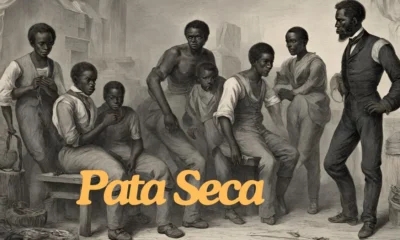Why some readers are turning away from The New York Times. This in-depth analysis explores the reasons behind the declining popularity of NYT, including political bias, journalistic integrity, and reader dissatisfaction.
Introduction
The New York Times (NYT) has long been considered one of the most reputable newspapers in the world. However, in recent years, a growing number of readers have expressed their dissatisfaction with the publication. This shift in perception has led to a significant number of former fans distancing themselves from the NYT. This article delves into the reasons behind this change, examining factors such as perceived political bias, issues of journalistic integrity, and overall reader dissatisfaction.
Perceived Political Bias
One of the primary reasons cited by former NYT readers is the perception of political bias. The NYT has faced criticism from both sides of the political spectrum, with some accusing it of leaning too far to the left while others claim it panders to the establishment. This perceived bias has led to a loss of trust among readers who expect impartial reporting.
Left-Leaning Accusations
Critics on the right often argue that the N YT has a liberal bias, pointing to its editorial choices and the tone of its reporting. They claim that the newspaper frequently prioritizes progressive viewpoints and dismisses conservative perspectives. This perception has alienated conservative readers who feel that their views are not represented fairly.
Establishment Allegations
On the other hand, some on the left accuse the NYT of catering to the establishment and being reluctant to challenge powerful interests. They argue that the newspaper’s coverage of certain issues, such as corporate influence and government policies, lacks the necessary critical analysis. This has led to disillusionment among readers who seek more radical or anti-establishment perspectives.
Issues of Journalistic Integrity
Journalistic integrity is another significant concern for former NYT fans. Instances of factual inaccuracies, sensationalism, and conflicts of interest have eroded the trust that many readers once had in the publication.
Factual Inaccuracies
There have been notable instances where the N YT has published stories containing factual errors. While retractions and corrections are issued, the initial impact of these inaccuracies can be damaging. Readers expect reliable and accurate information, and repeated errors can undermine confidence in the newspaper’s credibility.
Sensationalism
The rise of digital media has put pressure on traditional newspapers to attract online readership through engaging content. Some former readers argue that the NYT has increasingly resorted to sensationalism to boost traffic. This approach, characterized by exaggerated headlines and emotive language, can compromise the quality and objectivity of reporting.
Conflicts of Interest
Concerns have also been raised about potential conflicts of interest within the NYT’s reporting. For example, connections between journalists and political figures or corporate entities can create perceptions of bias. Transparency about such relationships is crucial, and any lack thereof can damage the newspaper’s reputation for integrity.
Reader Dissatisfaction
Overall reader dissatisfaction encompasses a range of issues, from the quality of content to the accessibility of the newspaper. Former fans often cite a combination of factors that have contributed to their decision to stop reading the NYT.
Quality of Content
Some readers feel that the quality of the NYT’s content has declined over the years. They argue that the newspaper’s investigative journalism and in-depth reporting have been overshadowed by opinion pieces and less rigorous news coverage. This perceived decline in quality has led to frustration among those who value thorough and objective journalism.
Paywall and Accessibility
The NYT’s digital paywall is another point of contention. While many understand the need for the newspaper to generate revenue, the paywall can be a barrier for readers who cannot afford a subscription. This has led to criticism that the N YT is prioritizing profit over public access to information.
Editorial Decisions
Editorial decisions, such as which stories to prioritize and how to frame certain issues, have also been a source of dissatisfaction. Readers may feel that the NY T’s editorial stance does not align with their values or that important stories are overlooked in favor of more sensational topics. These decisions can influence readers’ perception of the newspaper’s integrity and relevance.
Impact of Social Media
The rise of social media has significantly impacted how people consume news, and this shift has had implications for the NYT as well. Social media platforms offer alternative sources of news and information, allowing readers to bypass traditional media outlets like the NYT.
Alternative News Sources
Social media platforms have democratized the distribution of news, enabling independent journalists and smaller news outlets to reach a wider audience. This has provided readers with a broader range of perspectives and alternatives to mainstream media. Some former NYT readers have turned to these alternative sources for news that they feel is more unbiased and representative of their views.
Influence of Influencers
Social media influencers, including political commentators and opinion leaders, also play a role in shaping public opinion. These influencers often critique mainstream media, including the NYT, and highlight perceived biases or shortcomings. Their large followings can amplify dissatisfaction with traditional news outlets and contribute to the decline in the NYT’s popularity.
The Role of Media Literacy
Media literacy, or the ability to critically analyze and evaluate media content, is an important factor in the changing perception of the NYT. As readers become more media literate, they are better equipped to identify biases, fact-check information, and seek out diverse perspectives.
Critical Consumption
Media literacy encourages readers to engage with news content critically, questioning the sources, motives, and accuracy of the information presented. This critical approach can lead to greater scrutiny of the NYT’s reporting and contribute to the perception that the newspaper is not meeting the standards of objective journalism.
Diverse Perspectives
Increased media literacy also drives readers to seek out diverse perspectives and alternative news sources. This can result in a more informed and balanced understanding of current events, but it can also lead to the fragmentation of news consumption. Former NYT readers may turn to multiple sources to get a more comprehensive view of the news, rather than relying on a single publication.
FAQs
Why do some readers perceive the NYT as politically biased?
Many readers perceive the NYT as politically biased due to its editorial choices and the tone of its reporting. Critics argue that the newspaper often prioritizes progressive viewpoints or caters to the establishment, leading to a loss of trust among readers with differing perspectives.
What are some examples of issues with journalistic integrity at the NYT?
Issues with journalistic integrity at the NYT include instances of factual inaccuracies, sensationalism, and potential conflicts of interest. These concerns have eroded the trust that many readers once had in the publication.
How has social media impacted the popularity of the NYT?
Social media has provided readers with alternative sources of news and information, allowing them to bypass traditional media outlets like the NYT. Influencers and independent journalists on social media platforms often critique mainstream media, contributing to the decline in the NYT’s popularity.
What role does media literacy play in the changing perception of the NYT?
Media literacy, or the ability to critically analyze and evaluate media content, plays a significant role in the changing perception of the NYT. As readers become more media literate, they are better equipped to identify biases, fact-check information, and seek out diverse perspectives.
Why do some readers feel that the quality of the NYT’s content has declined?
Some readers feel that the quality of the NYT’s content has declined due to a perceived shift away from investigative journalism and in-depth reporting towards opinion pieces and less rigorous news coverage. This perceived decline in quality has led to frustration among those who value thorough and objective journalism.
How does the NYT’s paywall affect reader satisfaction?
The NYT’s digital paywall can be a barrier for readers who cannot afford a subscription, leading to criticism that the newspaper is prioritizing profit over public access to information. This has contributed to overall reader dissatisfaction.
Conclusion
The decline in the popularity of The New York Times among some readers can be attributed to a combination of factors, including perceived political bias, issues of journalistic integrity, and overall reader dissatisfaction. The impact of social media and the rise of media literacy have also played significant roles in shaping public perception. While the NYT remains a respected publication, it faces challenges in maintaining the trust and loyalty of its readership in an evolving media landscape. Understanding these dynamics is crucial for both the NYT and its readers as they navigate the complexities of modern journalism.

 Life style5 months ago
Life style5 months ago
 Health5 months ago
Health5 months ago
 Life style4 months ago
Life style4 months ago
 Entertainment5 months ago
Entertainment5 months ago
 Blog5 months ago
Blog5 months ago
 Entertainment5 months ago
Entertainment5 months ago
 Life style5 months ago
Life style5 months ago
 Health5 months ago
Health5 months ago





